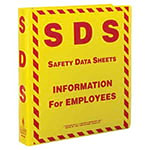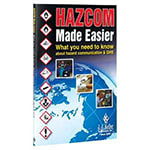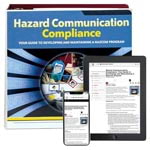The OSHA Hazard Communication Standard (HCS), 29 CFR 1910.1200, is designed to protect employees from hazardous chemicals used or stored in the workplace. It gives workers the right to know and understand the chemicals they are exposed to and how to work with them safely. The standard aligns with the Globally Harmonized System of Chemical Classification and Labeling (GHS) for a consistent approach to classifying chemicals and communicating the hazards associated with their use.
Under the HazCom standard, all workplaces that have hazardous chemicals are required to maintain a chemical inventory and have a written hazard communication program. Laboratories and work operations where employees only handle chemicals in sealed containers, such as a warehouse, are not required to have a written program; however, they do have other responsibilities under the HazCom standard.
The written program must describe how it will meet the HCS requirements for:
- Labels and other forms of warning for hazardous chemical containers,
- Safety data sheets (SDS) for all hazardous chemicals, and
- Training and information for any employee who has the potential of being exposed to a hazardous chemical
It also must include:
- A list/inventory of the hazardous chemicals present in the workplace
- How the employer will inform employees of the hazards of non-routine tasks and the hazards associated with chemicals in unlabeled pipes
- How chemical hazard information will be communicated on multi-employer worksites
News & FAQs
Free Whitepapers
- OSHA's Written HazCom Program: What You Need to Know… and Do
- The Ins and Outs of HazCom Training
- Hazardous Chemicals 101: Understanding the Difference Between Hazmat, HazCom and Hazwaste
- Your Guide to Safe Storage of Flammable Liquids in the Workplace
- Chemical Management: Does It Have to Be So Difficult? – Market Insights & Regulatory Information
- Top 3 Challenges of Managing Safety Data Sheets (SDSs) and How to Overcome Them
Topics — What You Need to Know
Labels and Markings
All containers of hazardous chemicals must be labeled, tagged, or marked with the identity of the material and appropriate hazard warnings. To be both GHS- and OSHA-compliant, labels on shipped containers must have the following elements:
- Product identifier
- Pictogram(s)
- Signal word
- Hazard statement(s)
- Precautionary statement(s)
- Name, address, and telephone number of the chemical manufacturer, importer, or other responsible party
Get the answers to frequently asked questions about GHS labels.
Safety Data Sheets
Chemical manufacturers and importers must obtain or create a GHS-style, 16-section safety data sheet for each hazardous chemical they produce or import. Employers are required to have an SDS for each hazardous chemical used in the workplace. SDSs must be readily accessible to workers.
See the safety data sheet FAQs to learn more.
HazCom Training
Employees must be provided information and trained on hazardous chemicals at the time of their initial assignment and when a new hazard is introduced into the workplace. HazCom information and training must cover:
- The general requirements of the HazCom standard
- Operations in the work area where hazardous chemicals are present
- How to detect the presence of a hazardous chemical
- All hazards, such as physical and health, associated with chemicals
- How employees can protect themselves from chemical hazards, including emergency procedures and PPE use
- Location, availability, and details of the employer's hazard communication program, including the chemical inventory and an explanation of labels and safety data sheets
HazCom Compliance Checklist
To be compliant, an employer must:
- Train employees on the hazardous chemicals in the workplace
- Instruct workers on how to recognize exposure to hazardous chemicals and how to protect themselves
- Provide training on container label elements
- Offer instruction on safety data sheet (SDS) format and content
- Explain to employees how to access SDSs
- Update SDSs when new versions become available
- Create a written HazCom program and update as needed
- Explain to employees how to obtain a copy of the written HazCom program
- Train employees on any in-house labeling system used
- Make sure all container labels in the workplace are compliant
J. J. Keller Hazard Communication Services
J. J. Keller offers a range of services to meet your hazard communication needs:
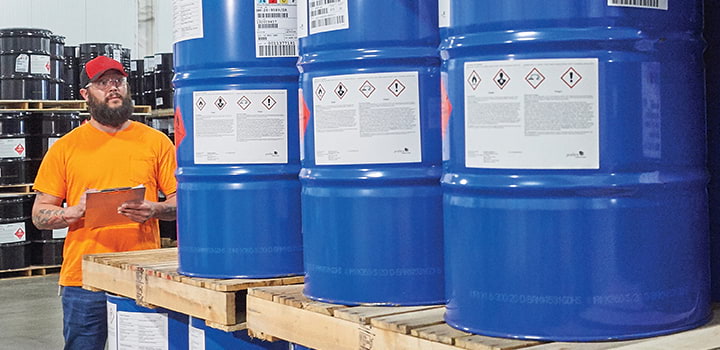
J. J. Keller® Chemical Center
J. J. Keller® Chemical Center, part of J. J. Keller® Safety Management Suite, has the tools needed to create and maintain a comprehensive HazCom program, including access to SDSs and GHS-compliant labels. Learn more about J. J. Keller® Safety Management Suite.

OSHA Compliance Program
J. J. Keller consultants assess your OSHA compliance and safety risks and provide ongoing guidance and resources to improve workplace safety. An on-site assessment can focus on your hazard communication program and SDS review and analysis. Learn what's included in the OSHA Compliance Program.
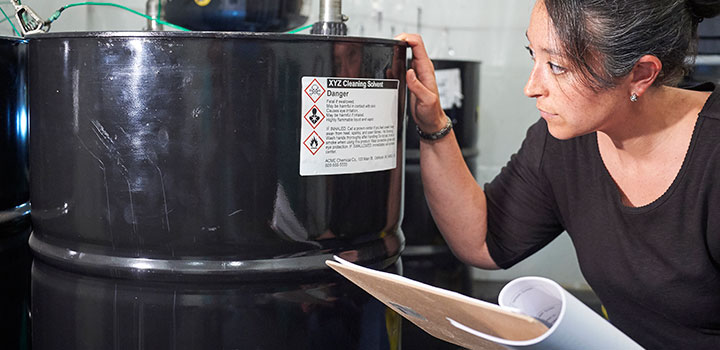
Chemical Management Service
Work with J. J. Keller consultants and have your HazCom program managed for you. Our full-service chemical management service is tailored to your needs and includes a HazCom program assessment, chemical inventory creation, SDS and label management, training, and program reporting. Learn more about our Chemical Management Service.
Hazard Communication Solutions
Stay compliant with OSHA's HazCom standard with our wide range of products, including hazcom training, labels, and supplies.
HazCom Training
Meet requirements for HazCom and Globally Harmonized System training with programs in a variety of formats.
GHS Pictogram Labels
Choose from a variety of Globally Harmonized System and SDS labels.
HMIS Labels
Hazardous Materials Identification System labels help you comply with OSHA's HazCom Standard.
NFPA Labels
Get the National Fire Protection Association labels you need to comply with NFPA marking requirements.
Supplies
Get the tools you need for hazard communication, GHS and Safety Data Sheet (SDS) compliance.
Hazard Communication and GHS Posters
Laminated posters cover a variety of related topics.
HazCom Made Easier Handbook
Gives employees important information to better ensure safety around hazardous chemicals.
Hazard Communication Compliance Manual
Comprehensive manual provides guidance on hazard communication programs.





